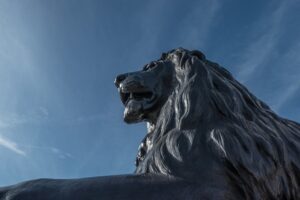Biblical Definition of Courage
Courage is commonly defined as the ability to do something that normally frightens someone. It originates from Middle English, a form of the English language spoken after the Norman conquest in 1066 until the late 15th century. The meaning denotes the heart, as the seat of feelings and is taken from the Old French word corage and from Latin cor meaning “heart.” Simply stated, courage is commonly defined as being motivated from the heart to do something brave. The same is true of the Bible’s definition for courage. However, the Bible talks about what motivates the heart to produce courage. The Bible addresses these motivations as either being good or bad.
Good courage always relies on the supernatural power of God to strengthen and motivate believers to be courageous as children of God (Romans 5:3-5). Bad courage relies on human abilities and motives such as the lust of the flesh, lust of the eyes, and pride (James 1:19-27; 1 John 2:15-16). Here is what the Bible tells us about courage:
- The hearts of believers who show good courage are strengthened by God. (Psalms 27:14; Psalms 31:24)
- God inspires believers to encourage one another. (Deuteronomy 1:38; Deuteronomy 3:28; Acts 28:15; Ephesians 4; Hebrews 10:24)
- Good courage is pleasing to God. (Deuteronomy 31:6-8, 23; Joshua 1:1-18; Joshua 10:25; 1 Chronicles 28:20; 2 Chronicles 19:11; Psalms 27:14; Psalms 31:24)
- Believers and non-believers alike can demonstrate and inspire others to demonstrate bad courage (Deuteronomy 13:6-8; 2 Samuel 1:14-17; Psalms 64:5’ Proverbs 1:10; Ephesians 6:4)
- God does not approve of evil courage. (Psalms 55:19; Amos 2:16; Romans 3:10-17)
Courage is an interesting virtue. Those who have it, do not need it explained to them. Those who do not have it do not understand it at all. Courage is not the absence of fear. People with courage have just as much fear as the next person. To accept the challenge of the unknown despite all your fears is courage. Here is what a courageous person does:
Lives from the Heart – To live with courage means to embrace the known insecurity of life and live in it, with love and trust. Those who live with their head full of fear and constantly seek safety and security cannot live life to the fullest. They can never be fully alive. What is important is whether God is also in your heart.
Is Decisive – Making mistakes is part of life. It is how we learn and develop experience. We just need to avoid making the same mistakes twice. That shows that we learned from the first time and that we have gained wisdom. If you want a memorable and exciting life, keep moving, keep learning from your mistakes.
Uses Their Courage to Avoid Anxiety – You only need to ponder a problem long enough to understand it. Once you understand it, decide on a course of action, and implement it without delay. If you are courageous and face a challenge, decide, act, and resolve it.
Lives Life as an Adventure – Both in life and in business, fortune favors the courageous. Courage encourages us to live in the moment, to be alive. Not to dwell on the past or to waste time worrying about the future. Those who make a conscious effort to develop their courage will always live a vibrant, exciting, life.
Listens to their heart – What does your heart choose? If it is filled with God, your courage will ensure that you will live a most fulfilling life. You will not get everything right. You will stumble and fall, but you will not care about that because you will always rise, and your life will become a daring adventure, an exciting, vibrant, memorable adventure.
Example of Biblical Courage
The story of David and Goliath is a well-known story about courage. It teaches us to have courage by trusting in the experience and skills that God has given us when dealing with adversity. We find David’s story in 1 Samuel 16-17. David was a simple shepherd boy that was chosen by God to be the future king of Israel. While David was delivering food to his brothers during a battle, David saw that the giant was taunting the Israelites to fight. David was surprised that none in the Israelite army would defend God’s people so he took courage in the belief that with God, even he could kill the giant no matter how great the odds were against him. David then stepped forward to fight the giant that was 18 feet, 6 inches tall.
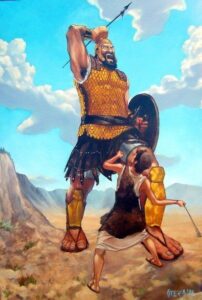 David pleaded with King Saul to let him fight the giant. David’s confidence came from his prior experiences. David would have had to have been of sufficient age, size, strength, and skill to have killed the lion and the bear that had attacked the sheep that David had been tending for his father (as David mentioned to Saul in 1 Samuel 17:34-37). He would also have had to be old enough to have developed sufficient skill in playing the lyre to the point where he would have been considered suitable for serving Saul in that regard. He was probably 16 years old. Finally, David believed that God would do the same with the Philistine giant, allow David to succeed. When King Saul consented to David’s request, David refused the king’s armor and went to fight the giant with only his staff and a sling shot.
David pleaded with King Saul to let him fight the giant. David’s confidence came from his prior experiences. David would have had to have been of sufficient age, size, strength, and skill to have killed the lion and the bear that had attacked the sheep that David had been tending for his father (as David mentioned to Saul in 1 Samuel 17:34-37). He would also have had to be old enough to have developed sufficient skill in playing the lyre to the point where he would have been considered suitable for serving Saul in that regard. He was probably 16 years old. Finally, David believed that God would do the same with the Philistine giant, allow David to succeed. When King Saul consented to David’s request, David refused the king’s armor and went to fight the giant with only his staff and a sling shot.
When the giant saw David, he proceeded to insult him as well as the Israelites. The giant said he would kill David and feed Him to the birds, but David courageously replied that he would fight the giant in the name of the Lord and the God of the armies of Israel. David then took his sling shot and loaded it with a stone and launched it at the giant. The stone hit the giant in the forehead and killed him.
Therefore, one should never take the virtue of Courage lightly or for granted. In fact, in Solomon’s writings, he ranked cowardice as one of the mortal sins (Ecclesiasticus 2:12,13; Revelation 21:8). To lead a virtuous life requires a courageous heart. The Hebrew word chazaq, means “to show oneself strong” is found in (Numbers 13:20; 2 Samuel 10:12; 1 Chronicles 19:13; 2 Chronicles 15:8; Ezra 10:4; Psalms 27:14; 31:24; Isaiah 41:6). To show oneself as strong requires God! David had both skill and God on his side. David exemplifies a courageous person.
Ideas to Explore
The story of David and Goliath provides an opportunity for an interactive session and group participation. Whether you make it a game or contest is optional. However, in our modern world, we are far removed from the reality of what David faced and accomplished. First, to master the “sling” or slingshot, next to kill a lion with a sling, and finally, to kill Goliath. To help bring this story into a more proper perspective, the task would include the making of several slings and the actual exercise of trying to use them. For safety’s sake, not with stones but with rubber balls simulating stones. Suggestions include racket balls or small Wiffle golf balls. Safety glasses are recommended for all participants.
 A historically accurate sling consists of a single patch of leather, approximately 6 to 8 inches long and 2 inches wide. Next, two leather straps are needed. Each should be 2 to 3 feet long. Gather (pinch the ends of the leather patch) and tie one end of a strap to each end. You should at this point have what looks like a swing, only instead of a flat for the seat, it would have formed a small cup, sized to fit the soft ball you plan to use as the “stone.”
A historically accurate sling consists of a single patch of leather, approximately 6 to 8 inches long and 2 inches wide. Next, two leather straps are needed. Each should be 2 to 3 feet long. Gather (pinch the ends of the leather patch) and tie one end of a strap to each end. You should at this point have what looks like a swing, only instead of a flat for the seat, it would have formed a small cup, sized to fit the soft ball you plan to use as the “stone.”
A sling works by affixing one of the straps to a person’s wrist while the same hand holds the other strap in the fingers. The ball is then placed in the leather cup. By swinging the straps, and leather cup with the ball in it in a large circle around and over one’s head, centrifugal force is applied to the projectile keeping it in the leather strap cup. The skill to use a sling comes from the timing of the release of the strap held in the fingers of the hand. When the strap held by the hand is released while the ball is being swung in a circle, the ball will fly out with force. A simple sling and a real stone can easily generate enough force to crush bones in an animal or human. A sling is not a toy. It was the weapon of choice for a shepherd in David’s time. Quickly, anyone using a sling will learn:
- Skill and practice are a necessity to even begin to use one correctly.
- Even with skill and practice, risks of missing the target are high.
- Repetitive attempts are not unusual and most probable.
- To accomplish what David did took courage, real courage.
- To accomplish what David did took God, a real God!
Examples of Historical Courage
There are thousands of examples of courageous people who participated in the American Revolution. For our lesson on the virtue of courage, however, we choose Dr. Joseph Warren. Dr. Joseph Warren (June 11, 1741 – June 17, 1775) was an American doctor and soldier. He is remembered for playing a leading role in American Patriot organizations in Boston and for his death on Bunker Hill as a volunteer private soldier while also serving as chief executive of the revolutionary Massachusetts government.
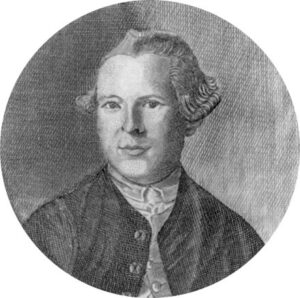 Warren was born in Roxbury, Massachusetts, to Joseph Warren and Mary (Stevens) Warren. His father was a respected farmer who was killed instantly in October 1755 when he fell off a ladder while gathering fruit in his orchard. After attending the Roxbury Latin School, he studied medicine at Harvard University, graduating in 1759 and then teaching for a time at Roxbury Latin. He married 18-year-old heiress Elizabeth Hooten on September 6, 1764, but she died in 1772, leaving him with four children.
Warren was born in Roxbury, Massachusetts, to Joseph Warren and Mary (Stevens) Warren. His father was a respected farmer who was killed instantly in October 1755 when he fell off a ladder while gathering fruit in his orchard. After attending the Roxbury Latin School, he studied medicine at Harvard University, graduating in 1759 and then teaching for a time at Roxbury Latin. He married 18-year-old heiress Elizabeth Hooten on September 6, 1764, but she died in 1772, leaving him with four children.
While practicing medicine and surgery in Boston, he joined the Freemasons and eventually was appointed as a Grand Master. He became involved in politics, associating with John Hancock, Samuel Adams, and other patriotic leaders. He became active in the Sons of Liberty and was appointed Chairman of the Massachusetts Committee of Correspondence. He drafted the Suffolk Resolves, which were endorsed by the Continental Congress, to advocate resistance to the British. The Suffolk Resolves was a declaration made on September 9, 1774, by the leaders of Suffolk County, Massachusetts. The declaration rejected the Massachusetts Government Act and resolved to carry on a boycott of imported goods from Britain unless the Intolerable Acts were repealed. He was appointed President of the Massachusetts Provincial Congress, the highest position in the revolutionary government.
As a skilled doctor, Warren did not need to “get involved” with the politics of a revolution. He was successful, wealthy, and could have easily taken the course of least resistance, just supporting the citizens of Boston as a doctor. However, it would be Dr. Warren who received intelligence about British troop movements, and then sent William Dawes and Paul Revere on their famous “Midnight Rides” on April 18, 1775, to warn Lexington and Concord of British raids. Several historians believe that his secret source for this information was none other than Margaret Gage, the wife of the British General Thomas Gage. During the Battle of Lexington and Concord the following day, he coordinated and led colonial militia into the fight alongside William Heath as the British Army returned to Boston. He played an important role in recruiting and organizing soldiers during the Siege of Boston.
Dr. Joseph Warren was appointed a Major General by the Massachusetts Provincial Congress on June 14, 1775. His commission had not yet taken effect three days later when the Battle of Bunker Hill was fought. He served as a volunteer private against the wishes of General Israel Putnam and Colonel William Prescott, who requested that he serve as their commander. Taunting the British, he uttered his famous quote: “These fellows say we won’t fight! By Heavens, I hope I shall die up to my knees in blood!” He fought in the front lines, rallying his troops to the third and final assault of the battle when he was killed by a British officer who recognized him.
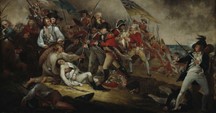 British Captain Walter Laurie, who had been defeated at Old North Bridge, later said he “stuffed the scoundrel with another rebel into one hole, and there he and his seditious principles may remain.” His body was exhumed ten months after his death by his brothers and Paul Revere, who identified the remains by the artificial tooth he had placed in his own jaw. This may be the first recorded instance of post-mortem identification by forensic odontology. His body was placed in Granary Burying Ground and later in 1825, in St. Paul’s Cathedral before finally being moved in 1855 to his family’s vault in Forest Hills Cemetery.
British Captain Walter Laurie, who had been defeated at Old North Bridge, later said he “stuffed the scoundrel with another rebel into one hole, and there he and his seditious principles may remain.” His body was exhumed ten months after his death by his brothers and Paul Revere, who identified the remains by the artificial tooth he had placed in his own jaw. This may be the first recorded instance of post-mortem identification by forensic odontology. His body was placed in Granary Burying Ground and later in 1825, in St. Paul’s Cathedral before finally being moved in 1855 to his family’s vault in Forest Hills Cemetery.
Warren has two statues in Boston, one in the exhibit lodge adjacent to the Bunker Hill Monument, and the other on the grounds of the Roxbury Latin School. The British General Gage is thought to have called Warren’s death of equal value to the death of 500 men, but his death strengthened the patriot political position because it was viewed by many Americans at the time as an act of nationalist martyrdom. Fourteen states have a Warren County named after him. Warren, Pennsylvania, Warren, Michigan, Warren, New Jersey, Warrenton, Virginia and Warren, Massachusetts are named in his honor. Boston’s Fort Warren, started in 1833, was named in his honor. Five ships in the Continental Navy and United States Navy were named Warren in his honor. John Warren, Joseph’s younger brother, served as a surgeon during the Battle of Bunker Hill and the rest of the war and then later founded Harvard Medical School.
Ideas to Explore
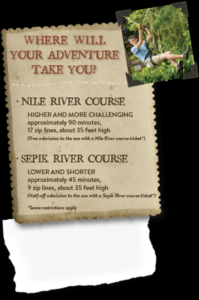 Building courage involves identifying fears, challenging them, stepping out in faith, and celebrating success. Consider taking the team to a challenge course, or a local zip line. Riding a zip line requires a willingness to ignore your better instincts about the science of racing down a thin wire at speeds up to 100 miles (161 kilometers) per hour. But whatever challenge course is near you, it can provide opportunities to fight fear and succeed. Consider St. Augustine Alligator Farm in St. Augustine, Florida, where one can fly blissfully through the air over the private enclosure of one 600-pound, 13 foot Malayan Gharial crocodile named Mr. T. Founded in 1893, The St. Augustine Alligator Farm Zoological Park began as a small exhibition of Florida reptiles and soon became a popular Florida attraction. Today it functions as a modern zoo serving the public and the scientific community with educational shows and exhibits, important research, and worldwide conservation efforts. The Alligator Farm’s history as an attraction and an accredited zoo is nearly as exciting as zipping across the Alligator Lagoon on Crocodile Crossing, the park’s thrilling zip-line attraction.
Building courage involves identifying fears, challenging them, stepping out in faith, and celebrating success. Consider taking the team to a challenge course, or a local zip line. Riding a zip line requires a willingness to ignore your better instincts about the science of racing down a thin wire at speeds up to 100 miles (161 kilometers) per hour. But whatever challenge course is near you, it can provide opportunities to fight fear and succeed. Consider St. Augustine Alligator Farm in St. Augustine, Florida, where one can fly blissfully through the air over the private enclosure of one 600-pound, 13 foot Malayan Gharial crocodile named Mr. T. Founded in 1893, The St. Augustine Alligator Farm Zoological Park began as a small exhibition of Florida reptiles and soon became a popular Florida attraction. Today it functions as a modern zoo serving the public and the scientific community with educational shows and exhibits, important research, and worldwide conservation efforts. The Alligator Farm’s history as an attraction and an accredited zoo is nearly as exciting as zipping across the Alligator Lagoon on Crocodile Crossing, the park’s thrilling zip-line attraction.
Example of Historical Courage Occurring in Florida
 Astronauts come to mind when we think of courageous people in Florida’s history. The Kennedy Space Center is filled with exhibits that document from the dawn of space exploration to current and ongoing missions, humans’ quest to explore space and planets beyond. You can get an up-close, hands-on feel for the story of humans in space. Fuel your quest for inspiration right here.
Astronauts come to mind when we think of courageous people in Florida’s history. The Kennedy Space Center is filled with exhibits that document from the dawn of space exploration to current and ongoing missions, humans’ quest to explore space and planets beyond. You can get an up-close, hands-on feel for the story of humans in space. Fuel your quest for inspiration right here.
Make sure that time is allotted to go to the Saturn V building. The Saturn V is one of the largest rockets ever designed and flown. It has just recently been replaced by Artemis 1, the space launch system of SpaceX, which generates a total of 8.8 million pounds of thrust
The Saturn V rocket lays on its side. Start at the bottom and walk the length of the rocket, passing each stage. Fully fueled for liftoff, the Saturn V weighed 2.8 million kilograms (6.2 million pounds), the weight of about 400 elephants. The rocket generated 34.5 million newtons (7.6 million pounds) of thrust at launch, creating more power than 85 Hoover Dams.
Now as you approach the top of the rocket, it is time for all to stop and pause. Spend a few moments in silence and contemplate what it must have been like to sit on top of that rocket, waiting for the countdown to expire. The task, simply to be sent to a moon, a quarter of a million miles away, land and come back. Now that is “courage.” Make sure you add the movie, The Right Stuff (1983) to your watch list. It is the story of the original Mercury 7 astronauts and their macho, seat-of-the-pants approach to the space program.
While the Kennedy Space Center is a “must” trip for all, there should be time in your day to end it at one of several memorial sites near the center. In the last half-century, about 30 astronauts and cosmonauts have died while training for or attempting dangerous space missions.
On January 28, 1986, the space shuttle Challenger exploded just 73 seconds after takeoff, killing all seven crew members, including high school teacher Christa McAuliffe, who had been selected from among more than 11,000 applicants to become the first teacher in space. It took nearly two months to recover the remains of the Challenger from the ocean floor, about 18 miles off the shore of Cape Canaveral, Florida. There are also many memorials around our country dedicated to a courageous teacher, the crew and the other astronauts who left our earth for eternity from our State, never to return to us. Use the end of the day to reflect on the idea of sacrifice in the meaning of courage.
Florida NASA Memorial Sites
NASA’s fallen heroes are honored at this monument to commemorate astronauts who gave their lives in pursuit of knowledge that lies beyond Earth. Highly polished black granite is emblazoned with the names of 24 astronauts, including the crews of Apollo 1, STS-51L Challenger and STS-107 Columbia. Dedicated in 1991 and created by the Astronauts Memorial Foundation the Space Mirror Memorial is designated as a national memorial on the National Register of Historic Places. Constantly illuminated, the astronaut names on this memorial are a simple reminder that the courageous act of space exploration can require the ultimate sacrifice.
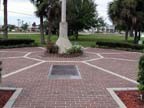 The Apollo/Challenger Memorial is in the city of Titusville Florida. It is a simple park, a place to reflect at the end of the day. What is left of the courage of our astronauts? A simple park? Hardly. Their courage challenged generations of future astronauts to explore the heavens that surround us!
The Apollo/Challenger Memorial is in the city of Titusville Florida. It is a simple park, a place to reflect at the end of the day. What is left of the courage of our astronauts? A simple park? Hardly. Their courage challenged generations of future astronauts to explore the heavens that surround us!

